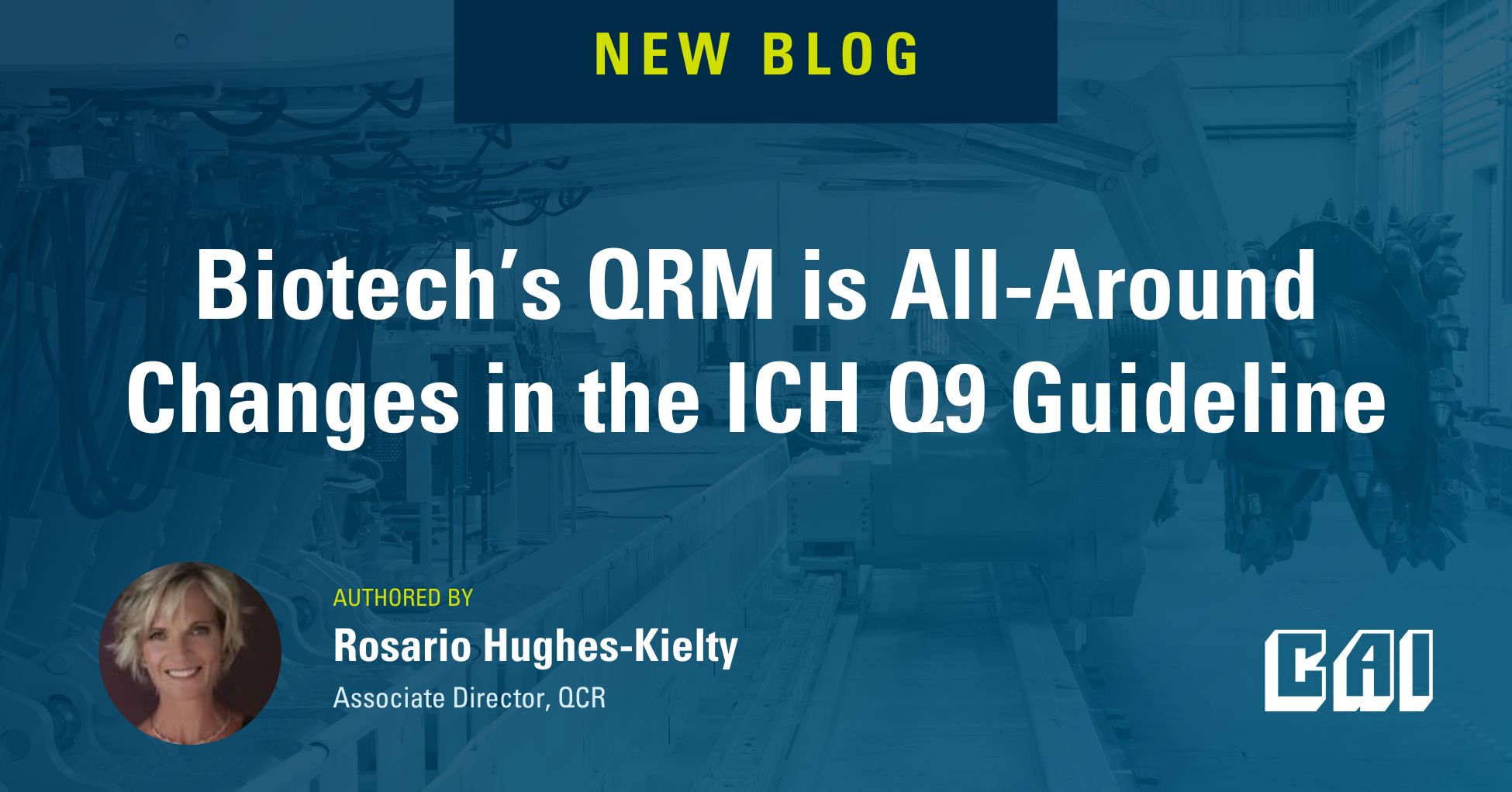
Biotech’s QRM is All-Around Changes in the ICH Q9 Guideline
To foster greater success and reduce failure rates within the biotechnology industry, it has become imperative for companies to establish robust risk management plans. Quality Risk Management (QRM) principles have emerged as a key strategy in achieving this goal. QRM details a comprehensive evaluation of risks associated with both patient safety and product quality, grounded in scientific knowledge, empirical data, and accumulated industry experience.
Regulatory authorities are emphasizing and implementing a lifecycle approach, aligning with the principles outlined in the ICH Q9 guideline. This approach encompasses formal and informal risk assessment tools, incorporating risk assessment, control, review, communication of identified risks, and acceptance of residual risks.
The most recent update to the ICH Quality Risk Management guideline, effective as of July 26, 2023, aims to enhance efficiency, effectiveness, and scientifically grounded control strategies within the biotechnology industry. Let’s delve into the key changes in these guidelines:
Reducing Subjectivity
The biotechnology industry is actively addressing subjectivity in risk assessments and QRM outcomes. Strategies include using recognized methods to control subjectivity in risk assessment and QRM activities, especially in risk scoring methods and hazard management. While complete elimination of subjectivity may not be feasible, reducing it should lead to more scientifically based control strategies and validation protocols, ultimately lowering the incidence of quality defects.
Supply Chain Resilience
Recognizing that quality and manufacturing issues can disrupt the supply chain and product availability, the biotechnology industry is embracing the revised ICH Q9 guidelines. Effective risk management now includes addressing product availability issues and using QRM and knowledge management to provide early warnings. Implementing a robust Quality Management System (QMS) and addressing lifecycle risks can enhance supply chain robustness and sustainable Good Manufacturing Practice (GMP) compliance.
Formality
This word formality has confused the Biotechnology industry as well as the regulators. The new guidelines clarify what constitutes formality in QRM and provides flexibility in how much formality can be applied. The guideline acknowledges that formality is measured on a spectrum, a myriad approach, providing guidance to companies on the characteristics of higher and lower levels of formality. The degree of formality should be determined based on the specific context and requirements of each situation.
The overarching goal is to ensure lower risk issues are dealt with efficiently, via a less formal approach. In this manner resources are freed up to deal with the more complex high-risk problem that need attention. Biotechnology companies should conduct a thorough analysis of potential risks across various aspects of their operations and establish a robust corporate governance framework to drive proper oversight and accountability. A greater understanding of formality in the industry will lead to improved product quality and patient safety.
Risk Based Decision Making
Recent events, such as the COVID-19 pandemic, have highlighted the importance of effective risk-based decision-making by both regulators and industry. The assessments and approvals of conditional marketing authorization as well as granting regulatory flexibilities, are just a few examples. The ICHQ9 revision seeks to provides clarity on effective risk-based decision-making and highlights the benefits of using such approaches for the biotechnology industry. This may include access to new technology for patients, which may require fast tracking, requiring risk-based decision making. The overarching goal of QRM is robust risk management, encompassing the lifecycle manufacturing performance and quality feedback, offering varying degrees of structure to the approach. The guidance also emphasizes the expected benefits of investing in risk-based decision-making activities. Remember when assessing and reviewing risk, aim to address uncertainties using science and engineering knowledge while keeping continuous improvement in mind.
Hazard Identification
The biotechnology industry is now placing a stronger emphasis on hazard identification when assessing risks. This shift represents a significant step forward, ensuring that risks are evaluated with a focus on their relevance to patient safety.
Continuous Improvement
Recently the industry has begun to implement more robust quality control systems, regular monitoring systems, and mechanisms to track and evaluate risks on an ongoing basis. As has been alluded to already the benefits are resounding; improved manufacturing consistency and reduction in costs as well as reduced probability of likelihood of quality defects, recalls, medical shortages.
In conclusion, the adoption of a scientifically based approach, in line with the revised guidelines, not only benefits the biotechnology industry but also provides regulators with a streamlined methodology for the future of medicine. These developments mark significant progress toward maintaining the highest standards of product quality and patient safety in the biotechnology sector.
Tags: Quality Risk Mgt, Regulatory Compliance, Global Regulation, Pharmaceutical Supply Chain, Guidance, QRM, Biotech, ICH Q9, QCR


